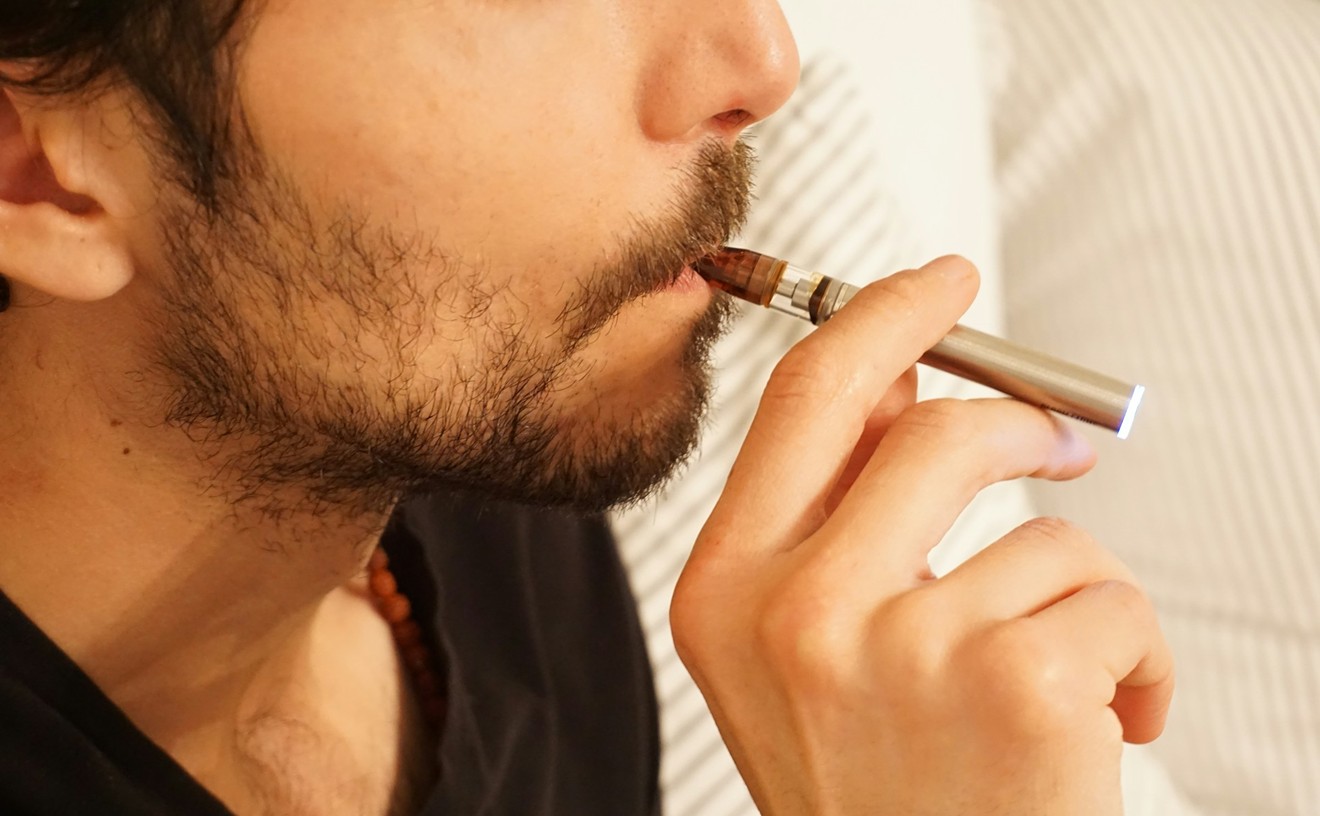Gather round the joint circle, boys and girls, we've got a scary story: What if we told you that joint in your hands came from a moldy jungle of Petri dish pot? Unlikely, but possible.
Believe it or not, recalls over harmful molds and yeasts have hit Colorado's cannabis industry — and probably not at a rate that reflects the real size of the problem. The state Marijuana Enforcement Division and Department of Agriculture don't have the resources to keep an eye on every cannabis cultivation in the state, and only a handful of city health agencies have taken it upon themselves to police the safety and health impacts of their licensed pot grows. In a twenty-month span from 2017 to 2019, the Denver Department of Public Health and Environment issued at least four separate mold recalls on cannabis grows that affected dozens of dispensaries.
As cannabis becomes more of an agricultural trade, microbial and pesticide contamination issues will increase, according to Willow Industries founder Jill Ellsworth. Using her experience in fighting microbials in the juicing world, Ellsworth started a company that decontaminates moldy pot to the point where she says it's safe to use. In fact, health agencies in Colorado and other states with legal pot have even released her client's cannabis from quarantine after using her machine, citing successful lab tests.
We caught up with Ellsworth to learn more about her weed-washing techniques, which just raised $2 million in funding.
Westword: How does your technology remove pathogens from cannabis while keeping it safe for consumption?
Jill Ellsworth: When I came up with this idea, it was important to use technology that was being utilized in other industries. We use ozone gas as a medium to decontaminate. It's used in food and agriculture, so when I decided to use it with cannabis, I spent a lot of time with research and development. We found that the ozone molecules will oxidize any contaminants on the flower: mold, yeast, mildew, bacteria, E. coli and salmonella. It attacks those pathogens and breaks down the cells so they're non-recognizable and can't get a consumer sick.
One of the things we did from the beginning was really focus on R&D. We utilized the ozone to oxidize and decontaminate the flower, but we wanted to make sure we weren't destroying any terpenes and potency, so that's what we really focused on.
Have any of your clients successfully used this to remove a product from a state or local government health quarantine and redistribute their cannabis?
Yes. We operate in ten states now. Colorado was our beta state, and we worked with Doctors Orders back in December, when they had a huge [mold] recall.
Ah, yes. We remember that one.
Yeah, it was a big deal, and they were freaking out. They called us, and we were able to go in clean all of their flower. It all passed microbial testing, but then it turned out they had a pesticide issue. But we were able to get the flower clean, in regard to state microbial testing.
Forgive our ignorance, but what is ozone? We're familiar with the layer currently being ravaged by humanity, but what is the ozone you're using?
It's a triatomic atom, so it's O3. It's essentially oxygen, as ozone is produced from oxygen. In our system, it pulls in ambient oxygen right out of the room it's in. Then it concentrates the oxygen and goes through an electrical charge, where it adds that O-negative molecule, so it converts O2 [oxygen] to O3. Then it oxidizes, the O-negative drops off, it converts back to oxygen, and it's a constant cycle. There's no gassing; it's just oxygen.
Does that work on concentrates, too?
Right now, we're just focusing on flower. We're trying to find ways to help oil, but right now, we're just looking at flower. Since ozone is a gas, it's hard to implement into a liquid. You could probably bubble it in, but that's never really been done. So TBD on that right now.
How do you make sure the terpenes, potency and flavor aren't affected when you're treating flower?
That's about ozone concentration. If you use too little ozone, you're not going to get rid of the microbials. If you use too much, you're going to destroy the flower. So we've found that perfect balance. When the product comes out of our machine, it's still covered in ozone molecules, but those off-gas and degrade back to O2. Within three days, it all off-gases, and the bud is beautiful and smells exactly how it should.
[
{
"name": "Air - MediumRectangle - Inline Content - Mobile Display Size",
"component": "12017618",
"insertPoint": "2",
"requiredCountToDisplay": "2"
},{
"name": "Editor Picks",
"component": "17242653",
"insertPoint": "4",
"requiredCountToDisplay": "1"
},{
"name": "Inline Links",
"component": "18838239",
"insertPoint": "8th",
"startingPoint": 8,
"requiredCountToDisplay": "7",
"maxInsertions": 25
},{
"name": "Air - MediumRectangle - Combo - Inline Content",
"component": "17261320",
"insertPoint": "8th",
"startingPoint": 8,
"requiredCountToDisplay": "7",
"maxInsertions": 25
},{
"name": "Inline Links",
"component": "18838239",
"insertPoint": "8th",
"startingPoint": 12,
"requiredCountToDisplay": "11",
"maxInsertions": 25
},{
"name": "Air - Leaderboard Tower - Combo - Inline Content",
"component": "17261321",
"insertPoint": "8th",
"startingPoint": 12,
"requiredCountToDisplay": "11",
"maxInsertions": 25
}
]













